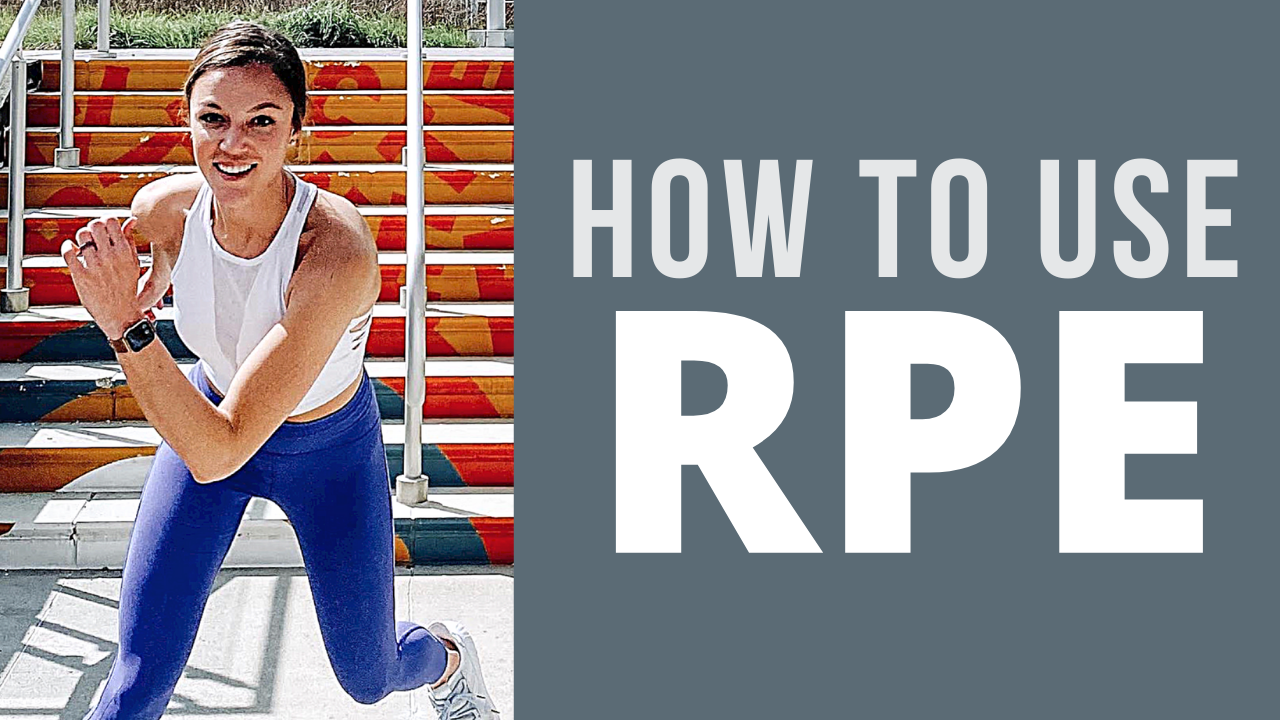
RPE: What Is It, and Why Does It Matter?
Nov 10, 2021Are you familiar with RPE?
RPE stands for Rate of Perceived Exertion, and it’s a way of measuring physical activity intensity levels. Perceived exertion is how hard you feel like your body is working.
RPE is a way for lifters, runners, athletes, etc., to self-regulate their training intensity. When used in a personal setting, it can be a way to determine your training intensity or effort.
Using RPE can be helpful for females, especially with the variability of our energy and menstrual cycle.
How it works
When weight lifting, we use RPE to judge how heavy a set of an exercise feels. It doesn’t matter how much weight or how many reps you did. If you finished your very last possible rep and had nothing left, your effort was a 10.
The rest of the scale is based on the same idea: how many reps you had “in the tank.”
RPE 10 - you couldn’t do another rep. This is an all-out max effort.
RPE 9 - you could have just barely done one more rep, but you didn’t. The work you did felt really, really hard.
RPE 8 - you could have done two more reps. This was a hard set but not killer.
RPE 7 - you could have done three more reps. This set wasn’t particularly challenging. You put in the work, you finished, and now you’re ready for more.
RPE 6 - you could have done four more reps. This wasn’t a hard set at all.
RPE 5 – This weight can be used as warmup and prep for heavier weights
RPE 4 & below – Lightweight that can be used for mobility, recovery, and form emphasis.
Why it matters
Using RPE could save us lifters from burnout and be an effective way to listen to the body and prescribe deload weeks. You could also use RPE to guide your workouts along with your menstrual cycle!
From Days 14 to 21 (2 weeks after your period), as estrogen is lower compared to the follicular phase, you may find your strength feels a bit flatter. You may see less fluctuation of RPE at this time.
Where it gets really interesting is from Days 22 to 28. During this phase, you might feel like you can’t lift as heavy as the first two weeks of your cycle. This is where RPE comes in.
Instead of feeling down that last week’s weights feel heavy, you can use RPE to guide you through your workout. Shoot for effort over weight.
That’s the beauty of RPE: what you actually lift might change from day to day because you as a human being are different every day!
It will take some trial and error to figure out your RPE and get used to tracking it along with your weights. But with a bit of practice and patience, you can incorporate RPE into your workout routine to ensure you have effective and progressive workouts.
Check out the original post HERE.
Connect with us!
Email: [email protected]
